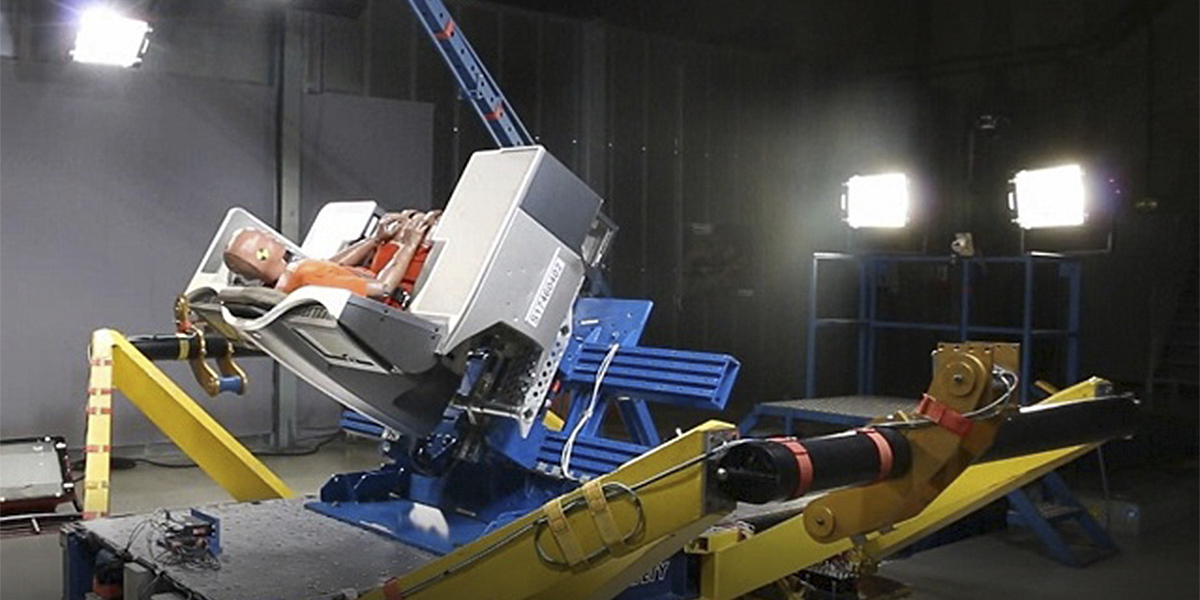SAE J2743 EV Battery Pack Passive Safety Airbag Testing
The SAE J2743 standard is pivotal in the realm of electric vehicle (EV) safety, particularly focusing on the passive safety systems that protect the battery pack during accidents. This testing ensures that the airbags and other safety devices function correctly under stress conditions to safeguard the integrity of the battery pack.
The SAE J2743 test is designed to simulate real-world crash scenarios, ensuring that the passive safety components are robust enough to withstand the forces generated in a collision without compromising the battery's structural integrity. This testing is essential for compliance with regulatory requirements and for enhancing vehicle safety standards.
During the SAE J2743 test, various parameters must be carefully controlled to accurately simulate the conditions of an accident. These include the type of crash (side impact, frontal impact), the speed at which it occurs, and the force distribution across the battery pack. The test setup involves placing the battery pack in a specially designed rig that replicates the structural environment found within a vehicle during a crash.
The airbags are integrated into this rig to ensure they deploy under controlled conditions that mimic an actual accident scenario. The testing apparatus is equipped with sensors to measure key parameters such as acceleration, force distribution, and deformation of the battery pack. These measurements are critical for evaluating the performance of the passive safety systems in protecting both the battery and passengers.
The SAE J2743 test also focuses on the thermal management aspects of the battery pack during a crash. The goal is to prevent overheating or short circuits that could lead to catastrophic failures such as fires. By testing under controlled conditions, engineers can identify potential weaknesses in the design and make necessary improvements.
This rigorous testing ensures that vehicles meet stringent safety standards and provide reliable performance in critical situations. Compliance with SAE J2743 is not just about meeting regulatory requirements but also about enhancing consumer confidence in EV technology. The test results are crucial for quality managers, compliance officers, R&D engineers, and procurement professionals to ensure they can deliver safe and reliable products.
The testing process involves meticulous preparation of the battery pack specimen before it undergoes the crash simulation. This includes ensuring that all components are correctly installed and that the battery is fully charged. The rigging of the battery in the test setup requires precision to simulate real-world conditions accurately.
Scope and Methodology
| Parameter | Description |
|---|---|
| Crash Type | Simulates side impact, frontal impact scenarios |
| Speed | Ranges from 30 km/h to 60 km/h depending on the test case |
| Force Distribution | Mapped using advanced sensors to ensure even deployment of forces |
| Battery Integrity | Evaluates structural and thermal aspects during a crash |
The SAE J2743 test involves several key parameters that must be carefully controlled. The type of crash, such as side or frontal impact, is simulated to ensure the passive safety systems are tested under realistic conditions. Speed ranges from 30 km/h to 60 km/h, depending on the specific requirements of the test case.
The force distribution during the crash simulation is crucial for evaluating how well the passive safety systems perform in distributing forces evenly across the battery pack. This ensures that no single point is subjected to excessive stress, which could lead to structural failure or thermal issues.
Battery integrity testing focuses on both structural and thermal aspects of the battery pack during a crash. Structural integrity tests ensure that the battery remains intact after the simulated crash, while thermal management tests focus on preventing overheating or short circuits that could cause fires.
Why Choose This Test
The SAE J2743 EV Battery Pack Passive Safety Airbag Testing is essential for ensuring that vehicles comply with safety regulations and standards. This testing provides critical data on the performance of passive safety systems during crash scenarios, which is crucial for enhancing vehicle safety.
- Ensures compliance with international standards
- Provides reliable test results to support design improvements
- Enhances consumer confidence in EV technology
- Identifies potential weaknesses early in the development process
- Facilitates regulatory compliance and certification
By choosing this test, manufacturers can ensure that their vehicles meet stringent safety standards. This testing is particularly important for electric vehicles, where battery integrity plays a critical role in overall vehicle safety.
The SAE J2743 test also provides valuable insights into the performance of passive safety systems under crash conditions. This information is crucial for R&D engineers to make design improvements that enhance both structural and thermal aspects of the battery pack.
Quality and Reliability Assurance
- Compliance with ISO 9001 quality management standards
- Use of advanced sensors and instrumentation for accurate data collection
- Digital record-keeping to ensure traceability of test results
- Regular calibration and maintenance of testing equipment
- Expert analysis by experienced engineers to interpret test data
The SAE J2743 EV Battery Pack Passive Safety Airbag Testing is underpinned by robust quality and reliability assurance practices. Compliance with ISO 9001 ensures that the entire testing process adheres to strict quality management standards.
Advanced sensors and instrumentation are used to collect accurate data during the test, providing reliable results for analysis. Digital record-keeping ensures that all test results can be traced back to their source, enhancing transparency and accountability.
Regular calibration and maintenance of testing equipment ensure consistent performance across tests. Expert analysis by experienced engineers guarantees that the data is interpreted correctly, leading to accurate conclusions about the performance of passive safety systems.





